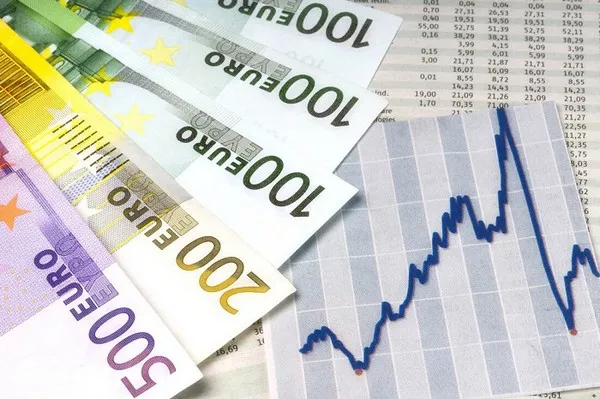The Swiss Franc (CHF), known for its stability and iconic banknotes, has undergone several changes in design and security features over the years. As a result, individuals may find themselves holding old Swiss Franc banknotes that are no longer in circulation. Exchanging old Swiss Franc notes is not only a matter of convenience but also a way to ensure that you retain the full value of your money. In this article, we will guide you through the process of exchanging old Swiss Franc notes and explain why it’s important to stay up-to-date with the latest currency designs and security features.
The Evolution of Swiss Franc Banknotes
Swiss Franc banknotes have a rich history, and their designs have evolved significantly over time. The most recent series of Swiss Franc banknotes, the Ninth Series, was introduced in stages between 2016 and 2019. It marked a departure from the Eighth Series and introduced a new range of security features and updated designs. The Eighth Series remained in circulation alongside the Ninth Series for a transitional period, but older series have ceased to be legal tender. Understanding these changes is vital for those who hold older Swiss Franc notes.
The Importance of Exchanging Old Notes
Exchanging old Swiss Franc notes is essential for several reasons:
Legal Tender: Old Swiss Franc notes that are no longer in circulation are not considered legal tender. This means that businesses and individuals are not obligated to accept them as a form of payment.
Security Features: Newer Swiss Franc notes incorporate advanced security features that make them more resistant to counterfeiting. Exchanging old notes ensures that you have access to the latest and most secure currency.
Preserving Value: Currency values can fluctuate over time, and holding old notes may result in a loss of value. Exchanging them allows you to retain the full value of your money.
International Acceptance: When traveling or making international transactions, it’s important to have valid and widely accepted currency. Old notes may not be accepted outside of Switzerland.
The Process of Exchanging Old Swiss Franc Notes
Exchanging old Swiss Franc notes is a straightforward process, and several options are available:
Swiss National Bank (SNB): The Swiss National Bank, the central bank of Switzerland, offers a service for exchanging old banknotes. You can visit an SNB branch or send the old notes by mail to exchange them. The SNB provides detailed information on its website regarding the exchange process.
Commercial Banks: Most commercial banks in Switzerland also offer exchange services for old Swiss Franc notes. You can visit your bank branch and inquire about their specific procedures and requirements for exchanging old notes.
Currency Exchange Offices: Currency exchange offices, often found in airports, tourist areas, and major cities, may also offer services for exchanging old Swiss Franc notes. They may charge a fee or offer slightly less favorable exchange rates compared to banks.
Limited Exchange Period: It’s important to note that there may be a limited period during which certain old notes can be exchanged. The Swiss National Bank typically provides information about the specific deadlines for exchanging each series of banknotes.
Identification: When exchanging old Swiss Franc notes, you may be required to provide identification, such as a passport or ID card. This helps prevent money laundering and ensures the legitimacy of the exchange.
Damaged Notes: Exchange services typically do not accept severely damaged or defaced notes. It’s advisable to exchange notes that are in reasonable condition. If you have heavily damaged notes, the Swiss National Bank provides guidelines on their website for dealing with damaged banknotes.
International Exchange: If you are outside of Switzerland and need to exchange old Swiss Franc notes, it’s recommended to contact a local bank or currency exchange service. Be aware that not all exchange providers may accept older Swiss Franc notes, so it’s best to check in advance.
Understanding the Series
To exchange old Swiss Franc notes, it’s important to identify which series they belong to. The Swiss National Bank has introduced a range of banknote series, each with distinct designs and security features. Understanding the series is crucial for ensuring a smooth exchange process.
The Swiss Franc banknote series introduced since 1995 are:
Eighth Series (1995-2016): This series was gradually replaced by the Ninth Series, and the old 8th Series notes are no longer legal tender. They were known for their vibrant colors and design elements.
Ninth Series (2016-2019): The Ninth Series introduced new security features, including a color-changing element and enhanced anti-counterfeiting measures. It is the current series in circulation.
Staying Informed
Currency is a dynamic aspect of a country’s economy, and it’s important to stay informed about changes in banknote designs, security features, and the status of older notes. The Swiss National Bank regularly communicates information regarding currency updates and provides details on the exchange process. By staying informed, you can ensure that your money retains its value and remains a reliable means of payment, both within Switzerland and internationally.
Conclusion
Exchanging old Swiss Franc notes is a practical and necessary step to ensure the continued value and usability of your currency. The Swiss National Bank and commercial banks provide convenient channels for this purpose. By staying up-to-date with the latest series and exchange deadlines, you can navigate the process with ease and confidence, ensuring that your Swiss Francs remain a trusted form of currency for transactions both at home and abroad.


